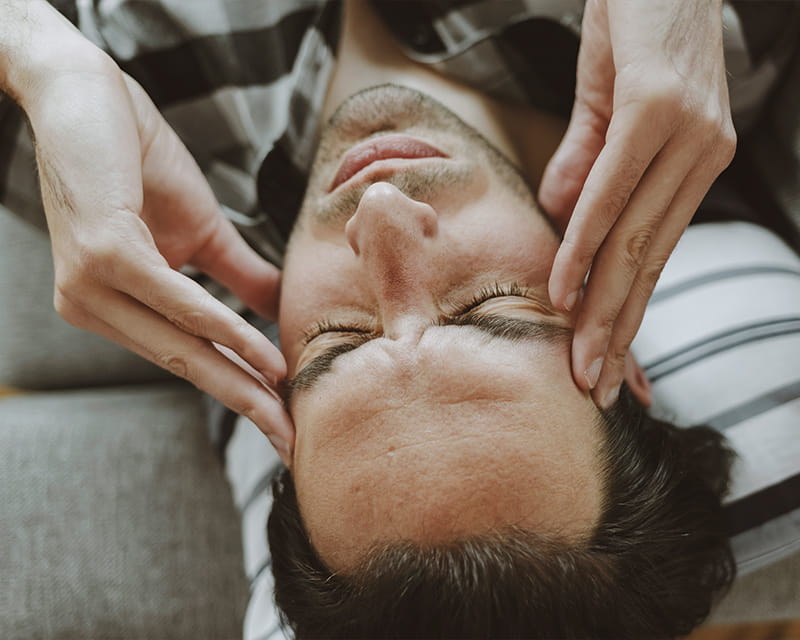
The benefits of using platelet-rich plasma therapy to treat back pain
 A physician at The Ohio State University Wexner Medical Center has developed an innovative ganglion block treatment for chronic post-traumatic headaches. W. Jerry Mysiw, MD, Professor of Physical Medicine and Rehabilitation, runs the Chronic Concussion Clinic. There, he and his team provide comprehensive treatments to patients with chronic headaches after a head injury.
A physician at The Ohio State University Wexner Medical Center has developed an innovative ganglion block treatment for chronic post-traumatic headaches. W. Jerry Mysiw, MD, Professor of Physical Medicine and Rehabilitation, runs the Chronic Concussion Clinic. There, he and his team provide comprehensive treatments to patients with chronic headaches after a head injury.
“The overwhelming majority of people referred to the clinic are those who have post-concussion symptoms,” Dr. Mysiw says. “These patients have been symptomatic for more than a year and treatment has been unsuccessful. They are referred to us for the management of their headaches and other concussion-related consequences.”
Dr. Mysiw says that between 1 million and 2 million people in the United States experience concussions each year, and 40% go on to develop post-traumatic headaches. A person with a post-traumatic headache can experience a tension headache, migraine headache and cervicogenic headache (a headache that radiates from the neck) all at once, he explains.
“These headaches are viewed as very difficult to treat,” Dr. Mysiw says. “Patients often have more than one headache concurrently. If you treat only a migraine and don’t address the tension or cervicogenic headache, you haven’t given the patient complete and optimal resolution of their headache.”
The Chronic Concussion Clinic team has extensive experience treating the nuances of post-traumatic headaches as well as other residual concussion symptoms. He says that this understanding is critical in helping patients get well.
“Our program is very effective at being aware of the complexity of headaches and is good at treating each of the triggers and different types of headaches,” Dr. Mysiw says. “This provides patients with the best outcomes.”
The first step is making sure they’re on the right medications.
“For example, some medications given to treat headaches have sedative properties,” Dr. Mysiw says. “If the patient has experienced a concussion and struggles with alertness, fatigue and memory problems, any medication that sedates will be poorly tolerated and rejected.”
The clinic also educates patients about potential headache triggers and ways to manage their environments.
“For a lot of people who have a concussion, one trigger is when they are put into an environment where their cognitive abilities are overwhelmed,” Dr. Mysiw says. “When a person with post-concussive symptoms is put into a room with a lot of noise, commotion or multiple conversations happening at once, they may have difficulty tolerating it and it can trigger a severe migraine.”
In addition to helping patients manage their medications and environments, Dr. Mysiw developed an innovative ganglion block treatment for post-traumatic headaches that isn’t currently offered anywhere else in the country.
“The concept of the sphenopalatine ganglion block was introduced in the early 1900s. Initially, it involved applying lidocaine gel to the end of a 6-inch-long cotton swab, then inserting the swab into the nasal passage,” Dr. Mysiw explains. “Many patients are reticent to do this and this form of treatment generally has very low compliance. We came up with a system where we can have the person spray a 4% topical lidocaine solution into their nose deep enough to numb the ganglion. We have them do it using a nasal spray device where we can very precisely control how much lidocaine is delivered with each treatment.”
This device allows them to administer the treatment whenever they experience the initial onset of a migraine.
“What’s so powerful about the technique is that it works quickly and is far better tolerated than other migraine medications,” he says. “We have seen that the more people use this treatment, the fewer migraines they experience over the next few months. Many patients see their migraines stop completely.”
Dr. Mysiw first had the idea for this treatment two years ago. His daughter experiences seizures, and one of her treatments is an antiseizure agent administered through the nose. When giving her the medication one day, Dr. Mysiw realized it could be possible to use the same treatment mechanism—a nasal spray solution—to help patients with chronic post-traumatic headaches. He and his team incorporated the new treatment at the clinic and have seen overwhelmingly positive results.
Dr. Mysiw says his patients find the relief from chronic headaches to be extraordinary.
“They say, ‘I had no idea how much pain I was in.’ People often have light sensitivity and when the migraine dissipates, they tell me they realize they haven’t seen certain colors in years,” he says. “It’s very emotional to watch—they have this horrible cloud lift as they experience relief right in front of you.”
The only downside to this treatment, he says, is that the lidocaine spray tastes unpleasant and numbs the back of the throat. However, these side effects usually dissipate after about 10 minutes and many patients agree it’s worth the tradeoff of not having a migraine.
Dr. Mysiw and his team are collecting data to support the treatment’s efficacy and plan to publish the results in the future.
If a patient has concussion symptoms three months after their concussion and their symptoms haven’t been successfully managed, Dr. Mysiw recommends referring them to the Chronic Concussion Clinic. Concussions cause structural injuries to the brain and can happen to anyone, not only athletes, so proper diagnosis and treatment are essential.